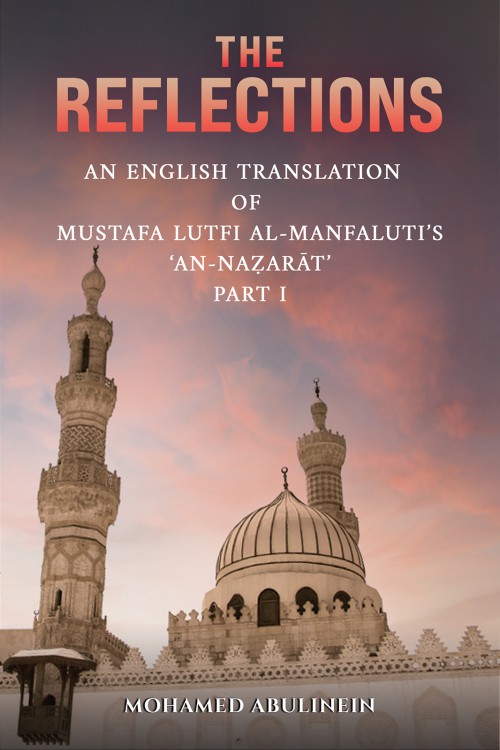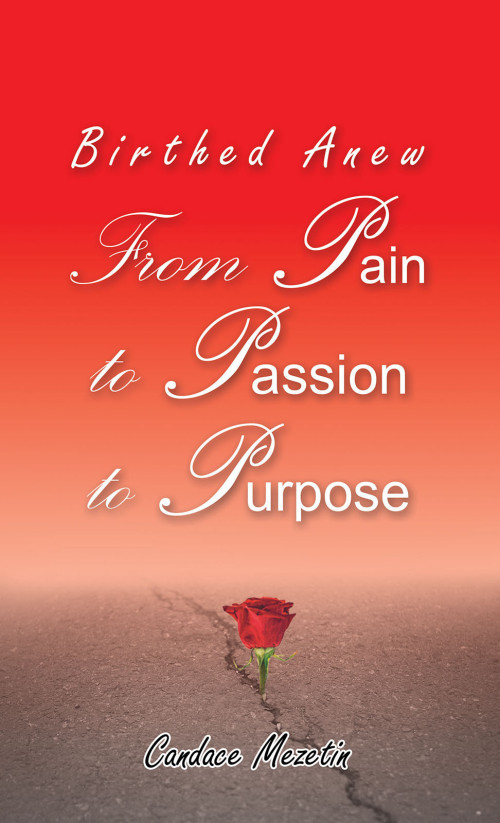Al-Manfaluti’s ‘An-Naẓarāt’ (‘The Reflections’), per se, is a marvelously- and pithily-authored magnum opus, composed of a superb array of short stories and essays galore as well as a few adapted translations, all of which first came out in al-Mu’ayyad newspaper of Egypt under the title of “al-’Usbū’iyāt,” and which were then compiled in three volumes, first published in 1910. The essays are sentimentalized, high-minded and elegantly worded.
With his keen reflective eye, al-Manfaluti unveils the kaleidoscopic tapestry of life, beckoning readership to delve into the rich interplay of cultural identity and the ever-evolving dynamics of society, and leaving an indelible mark on the readership’s legs of contemplative journey. John A. Haywood fairly argued that al-Manfaluti’s essay leitmotifs run the ‘whole gamut of current ethical and social problems’.
This book is, by all means, a revealer of the early 20th-century zeitgeist in Egypt in all respects. Political nationalism, pan-Islamic aspirations and religious reform had found expression in ‘An-Naẓarāt’ (‘The Reflections’) whence it unfolds so many idiosyncratic features and peculiarities of the Egyptian way of life and thinking, and unearths so many aspects of social and literary interest and study for those interested in the Middle East, especially in the period of the Nahda (i.e., the Modern Arabic Literary Renaissance) that lasted roughly from 1850 to 1914. It was as if it were — as meseems — the melting pot: the crucible.
I think this book is rightly considered a reference work, from which the readership would illatively infer the widespread attitude and mindset prevailingly entertained by the Egyptians at that time span.
Al-Manfaluti mounted a ferocious attack on ‘ossified rigidity’. He is quoted in his Introduction to his ‘An-Naẓarāt’ (‘The Reflections’) as there are, for the generalized public, “three shibboleths to withhold themselves from: ‘blaspheming infidels’, ‘idolizing shrines’, and ‘adopting ultraconservative reactionism for each and every deucedly outdated anachronistic institution’.”
He was at daggers drawn against hierolatry (or hagiolatry), which was superstitiously rampant amongst naïve gullible people, whose belief should have been in God, Who is the ‘true’ Supreme Being, Creator, Sustainer, Life-Giver, Law-Maker, and Ruler of the universe. Latria and veneration shall be due to God alone with no associates for His supreme excellence and to show complete submission to Him. The concept of worship in Islam is holistically comprehensive: it regulates the human life on all levels: spiritually, individually, socially, economically, and politically.
The essays and opuscula of An-Naẓarāt (‘The Reflections’) often start with a concrete event or a conversation, which heightens their topicality and liveliness, but mostly also suffer from a great verbosity, which reduces their vividness. Al-Manfaluti’s ideas were those of an enlightened Muslim conservative: he strongly emphasizes the ethical side of the problems he points out.
Al-Manfaluti remained an enigmatic figure, tethered to the vestiges of a bygone era as within his bygone sociopolitical mores resided al-Manfaluti’s unwavering belief in an antiquated societal order. His encomiums to the acquiescent poor betrayed an archaic sensibility, and his adamant rejection of female emancipation—a salvo against Qāsim ’Amīn’s tantalizing book, “Tahrīr al-Mar’ah” (1899)—marked him as an anachronism, especially when he preached on the ‘innate’ inferiority of women as echoing the dim recesses of history. His impassioned antipathy towards the condescending views of Islam espoused by Lord Cromer, acting as Egypt’s de-facto viceroy, unveiled not only a staunch defense of his faith but also a conviction that Western civilization owed its very genesis to the hallowed tenets of Islam. Al-Manfaluti’s affinities with the neo-orthodoxies of Muḥammad Rashīd Riḍā manifested in his unwavering condemnation of hierolatry, a pervasive societal malady that plagued Egypt and rankled the sensibilities of reform-minded Muslims.
Al-Manfaluti’s style was a mixture of medieval and modern. The smoothness, the imaginative metaphors and similes were all modern. The rhymed prose, which he himself criticized but could not discard, the balancing of words and phrases by rhyming and unrhymed synonyms, were traditional.
It was ergo al-Manfaluti’s style that won him his éclat. His idiosyncratic style, which is revealed vividly in all his own writings, is almost highbrow. It has a ‘luster of its own that is not tracked down in journalese’.
Amidst the discordant chorus of critical voices, J. Brugman’s critique of al-Manfaluti’s stylistic proclivities presents a nuanced antithesis to Gibb’s hasty decree. In contrast to Gibb’s assertion of al-Manfaluti as a harbinger of modernity, J. Brugman posits him as an avatar of an archaic literary tradition found in the ornamental prose of the rasa’il, and opines his style to be ‘modernizing’ rather than ‘modern’.
Al-Manfaluti, ensnared by a conceit of his own linguistic modernity, penned his rasa’il in a purportedly simple Arabic. However, his prose brims with redundant synonymous repetitions and arcane vocabulary, necessitating, ironically, the provision of explanatory footnotes even in the Introduction where he extolled the virtues of dictional simplicity.
While heralded as a literary bridge between neoclassicism and nascent romanticism, al-Manfaluti’s appeal lay not in his avant-garde sensibilities but in his uncanny ability to resonate with the conservative literary tastes of his time. His oeuvre, devoid of the rhythmic embellishments that characterized much of his epochal era’s prose, stands as a testament to his selective embrace of innovation.
[At such an intervallic juncture of time], and in a period of burgeoning popular literature, an exigency arose to streamline and refine prevalent prose styles, opening the door to a literary genre that resonated with a burgeoning readership. This transformative era witnessed Mustafa Lutfi al-Manfaluti (1876-1924) as a pivotal figure.
His oeuvre embodies the dynamic interplay of disparate intellectual currents that shaped Egyptian thought. Critics may question the coherence of his political and cultural perspectives, but the unvarnished candor, unadorned simplicity, and idealistic tenor of his writings, particularly his vignette collection “An-Naẓarāt” (1910-21), captivated his contemporary audience.
Through the transformative power of the press, his unpretentious style and clear moral compass found an eager readership, establishing him as a literary beacon in an era of societal transformation, and exemplifying the efficacy of straightforward expression and unwavering belief in virtue.
This book would also be a good tokenistic clue for those academics who would take upon their shoulders the mission of studying al-Manfaluti’s burgeoning stylistic diction and contribution in promoting the general tenor of the Arabic language. Al-Manfaluti took the ‘Ḍād-language’ many strides ahead in its march throughout its own history. He would be hearkened back to, and his name would be perpetuated alongside those who had contributed in the advancement and development thereof.
Al-Manfaluti used to call his essays as “رسائل—rasā’il” that I opt in to render as “opuscula (sing. opusculum/ opuscule).” After this genre of belles-lettres has been licked into shape in Egypt, and has taken its fully-fledged established form, it has come to be labelled “فن كتابة المقالات—Fan Kitābit al-Maqālāt (‘Art of Essay-Writing’).”
Al-Manfaluti used to tessellate and inlay his essays and writings with poetic verses, whether of his own or versified by other poets of earlier generations, whose poesy is well-known of concinnity and elegantly-worded verbal expressions that air the conceits in a more pithily- and rhetorically-elegant articulation.
“Lamb, indeed, is the nearest Romantic essayist to al-Manfaluti in his personal reminiscences, the stories embodied in his essays, the interest in the natural past, and his poems in prose, as well as using verse quotations to clinch his arguments,” wrote Abdul-Sattar Jawad in his doctoral dissertation.












